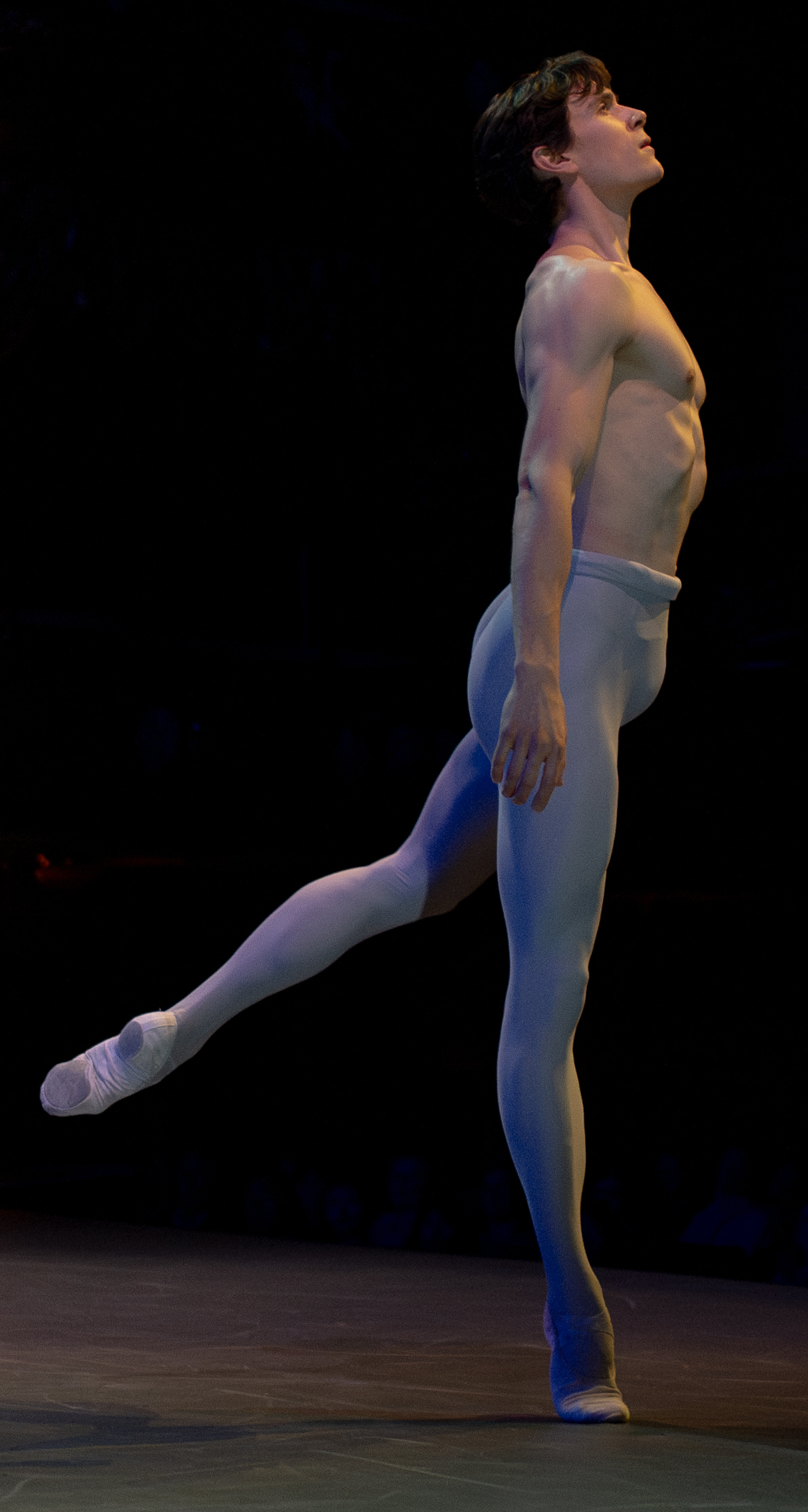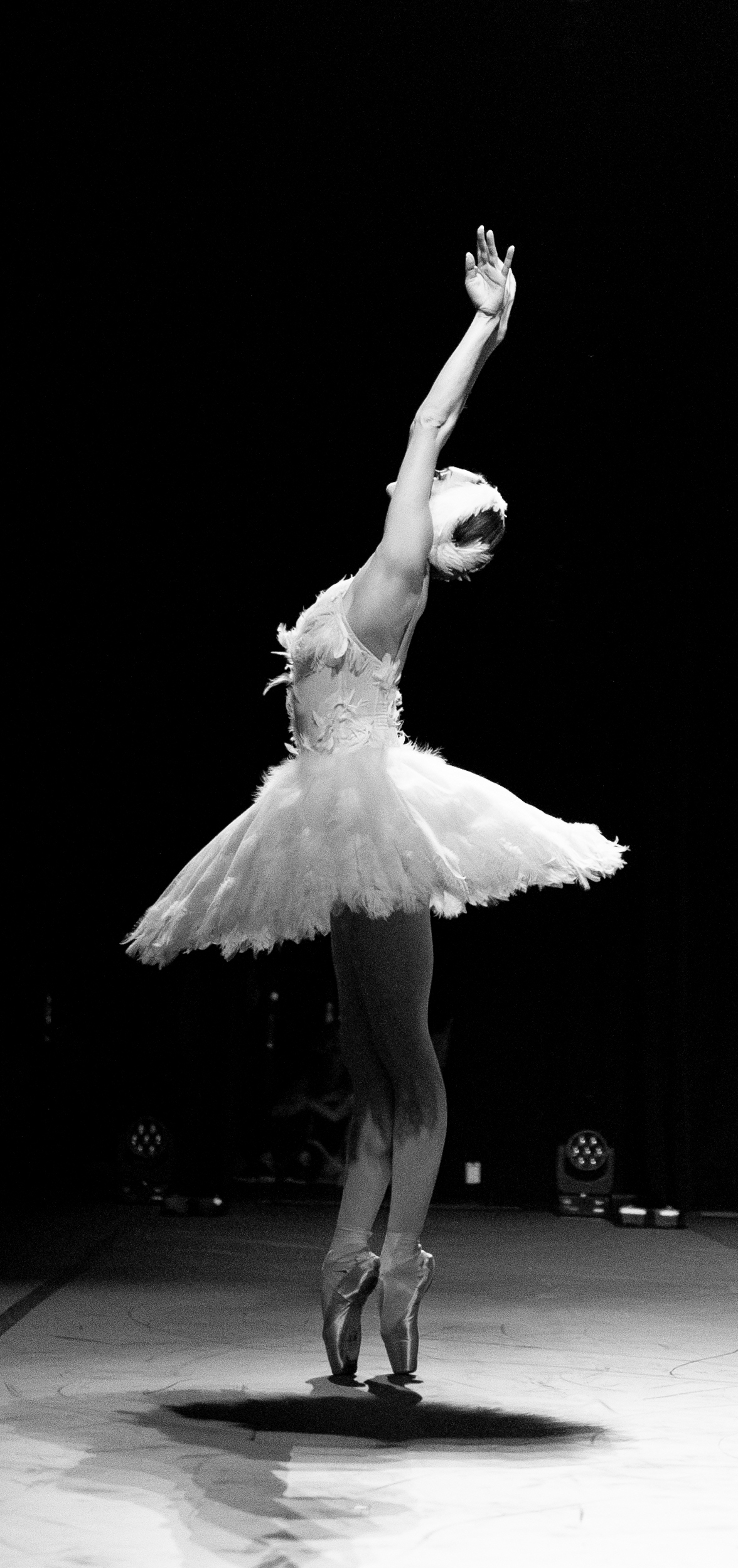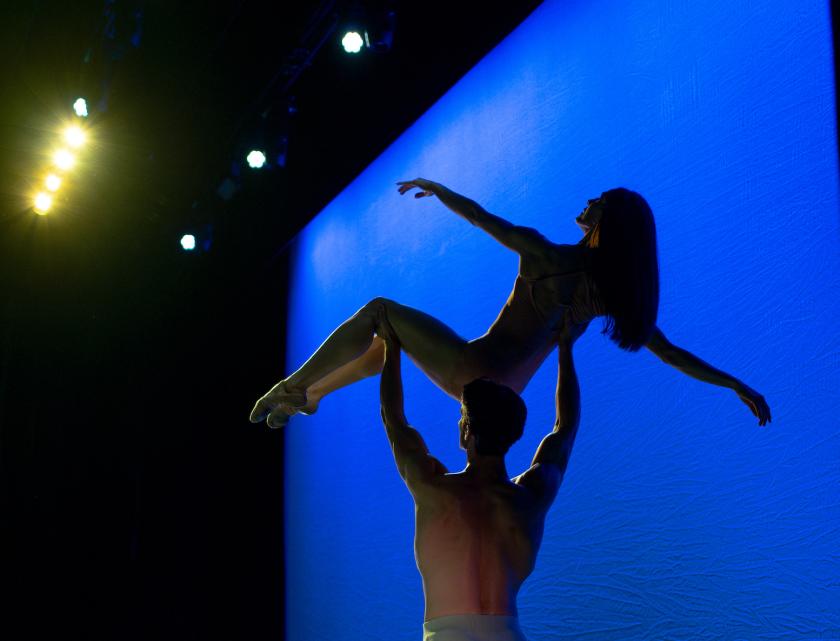It’s tempting to see the second gala created by Ukrainian-born Ivan Putrov as a reflection of the shift in Ukraine’s fortunes since his first one in March 2022. Somehow, just weeks after Ukraine was invaded, Putrov and his fellow student in Kyiv, Alina Cojocaru, brought the world’s finest principals to the London Coliseum for a show-stopping gala that was as moving as it was finely executed.
Now Ukraine languishes for lack of munitions, its hard-won gains in the balance again, and Putrov has had to rally support for his second gala – which funds young arts students in Ukraine – in a fraught climate of economic crisis. He has had to move from the first gala’s venue, the Coliseum, and its live orchestra, and to rely on the underpowered sound system at the Palladium, with occasional piano and cello accompaniment.
The lineup of dancers, though, could hardly be cavilled at, a meaty mix of stars and young hopefuls. Putrov addressed the audience at the start of the evening to share, among other things, that the Ukrainians on the bill had flown in from Canada to be there that night. There were dancers from companies in Japan, Holland, Sweden, Slovenia and Latvia, as well as the UK.
The evening began solemnly with the Ukrainian national anthem, sung by mezzo Kseniia Nikolaieva, whose regal tones, accompanied by singers from the Songs for Ukraine and Royal Opera choruses, were a beautiful battle cry. She followed that with the Prayer for Ukraine by the contemporary composer Valentin Silvestrov, a tender, quietly passionate plea for the nation’s salvation.
The first dance item couldn’t help but bring things down to earth after that: a curio, Forest Song (1946), danced by Olga Galytsia and Volodymyr Kutuzov from the Ukrainian National Ballet. It’s a duet for a shy woman in green whose initial timidity her partner gradually overcomes, so that the piece ends with her nuzzled against his shoulder, a woodland creature tamed. Kutuzov returned in the second half for a showstopper, however. In dashing scarlet pantaloons and boots, he thrilled with the Gopak solo from Taras Bulba, premiered by the Bolshoi in 1941, a feat of acrobatic chutzpah.
In between Kutuzov’s bookending appearances, the tone was varied and polyglot. The Royal Ballet provided star turns in a version of the balcony scene from Kenneth MacMillan’s Romeo and Juliet, with Matthew Ball in fine actorly form opposite Lauren Cuthbertson’s equally winning lovestruck teenager. RB dancers Luca Acri and Young Dancer Marianna Tsembenhoi from the Ukraine joined the excellent Vladyslav Bosenko, a Ukrainian now with the Slovak National Ballet, for the crowd-pleasing Le Corsaire pas de trois,
 The RB's Marianela Nuñez and Lukas Brændsrød were wonderfully seductive in a section of Christopher Wheeldon’s After the Rain, a swoon of a slow-motion duet to Arvo Pärt’s Spiegel im Spiegel, which they acquitted with casual perfection; and, in another piece of sustained balleticism, a big cheer for RB principal William Bracewell in Preliwd (pictured left), a solo to Rachmaninov created for him by Andrew McNicol, receiving its premiere at the gala. Bracewell can project a narrative with every minute gesture, even in an abstract piece like this one, where he began at a slow walk, a vigilant man gradually building up a sense of anticipation, before exploding into super-fast chainés, then subsiding to a slow walk again and continuing his quest.
The RB's Marianela Nuñez and Lukas Brændsrød were wonderfully seductive in a section of Christopher Wheeldon’s After the Rain, a swoon of a slow-motion duet to Arvo Pärt’s Spiegel im Spiegel, which they acquitted with casual perfection; and, in another piece of sustained balleticism, a big cheer for RB principal William Bracewell in Preliwd (pictured left), a solo to Rachmaninov created for him by Andrew McNicol, receiving its premiere at the gala. Bracewell can project a narrative with every minute gesture, even in an abstract piece like this one, where he began at a slow walk, a vigilant man gradually building up a sense of anticipation, before exploding into super-fast chainés, then subsiding to a slow walk again and continuing his quest.
Another modern item was David Dawson’s 2021 Metamorphosis, to Philip Glass, delicately performed by ENB’s Sangeun Lee and Gareth Daw, whose colleague Francesca Velicu, exuding charm, performed the first extract from La fille mal gardée, this one from the Gorsky/Petipa version, partnered by the Royal Swedish Ballet’s rock-steady Russian principal, Dmitri Zagrebrin. The second, wittier one, was the ribbon dance from Frederick Ashton’s 1960 version, in which Latvian National Ballet’s Sabine Stroksa and Philip Fedulov, with big grins, wove the ribbons around themselves and shimmied out of them to reveal they had made a perfect cat’s cradle. They were duly cheered.
From Japan came an extract from Asuka, a 1957 full-length ballet by Akiko Tachibana, revised by Asami Maki, and performed by Ballet Tokyo’s Tomoharu Yonekura (the Dragon King) and Yuri Hidaka (Sugaru-Otome). Sadly, the programme didn’t explain the context of the duet, but it was neatly done, Hidaka at one point almost jumping up onto Yonekura’s shoulder. Ditto a solo by Denys Cherevychko from Donetsk, Suite en blanc (1943), with choreography by Serge Lifar, was a showcase of mazurka moves, but with no sense for people new to the piece of its provenance.
 There could be no mistaking the two items in which Olga Smirnova performed, the Bolshoi superstar who left Russia for Holland and now dances with Dutch National Ballet. In the first half she performed the gala favourite Fokine’s Dying Swan (pictured right). Any sense that this was supernumerary were dispelled by the commitment of this great prima ballerina to communicating every detail of the swan’s ailing body. Her arms (presumably thanks to double-jointed shoulders) stretched out impossibly behind her as the swan’s wings, frantically fluttering and finally subsiding as she sank into a small pool of light that suddenly went dark.
There could be no mistaking the two items in which Olga Smirnova performed, the Bolshoi superstar who left Russia for Holland and now dances with Dutch National Ballet. In the first half she performed the gala favourite Fokine’s Dying Swan (pictured right). Any sense that this was supernumerary were dispelled by the commitment of this great prima ballerina to communicating every detail of the swan’s ailing body. Her arms (presumably thanks to double-jointed shoulders) stretched out impossibly behind her as the swan’s wings, frantically fluttering and finally subsiding as she sank into a small pool of light that suddenly went dark.
Her second item was the exact opposite in tone, the Carmen Suite (1967) by Alberto Alonso, in which her Don Escamillo (Denys Matvienko) swaggered and swirled his (invisible) cape at his new prey. But he didn’t get the memo: this Carmen was not for toying with, a haughty beauty with the froideur and kicks of an apache dancer, who unleashed her long legs in scything extensions perfectly timed to the clash of cymbals. It was one part cliché to nine parts charisma.
Putrov joined in as the male dancer in Russell Maliphant’s Two by Two (1997), along with Grace Jabbari from the Maliphant company. To the sonar pings and percussive rumblings of Andy Cowton’s score, the two dancers stood apart, each in their own zone, where they slowly built a repertoire of moves, accelerating their swirling arms and bending their torsos as the music swelled and thumped. Originally lit by Michael Hulls, here relit by Andrew Ellis, the piece seems to produce energy you can literally see as the dancers’ whoosh their limbs through the air. A standout.
The final item was suitably sombre, an extract from MacMillan’s Gloria (1980), to Poulenc’s piece of that name, featuring a silvery soprano. ENB’s Lorenzo Trossello was the soldier staggering through no-man’s land who encounters a ghostly soldier (Northern Ballet’s Joseph Taylor) and female dancer, half sprite, half flapper (ENB’s Minju Kang). His search for joy in a human wasteland was a salutary reminder of the gala’s origins. Last year it raised £160,000. Fingers crossed for this year.














Add comment